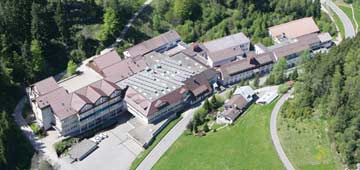Schneider turns seventy-five (part II)
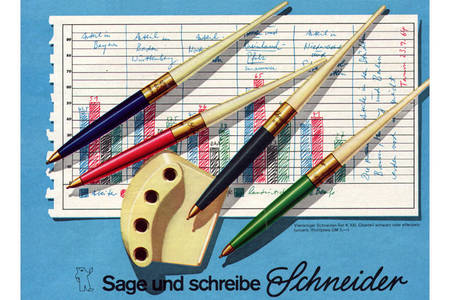
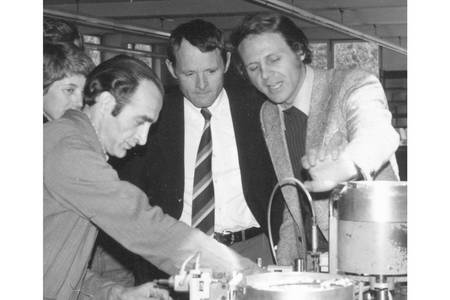
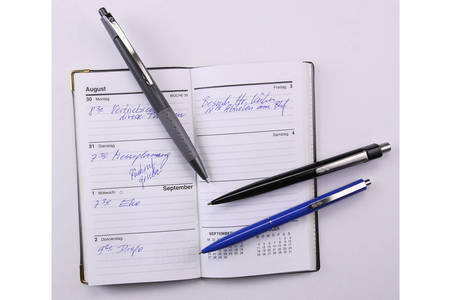
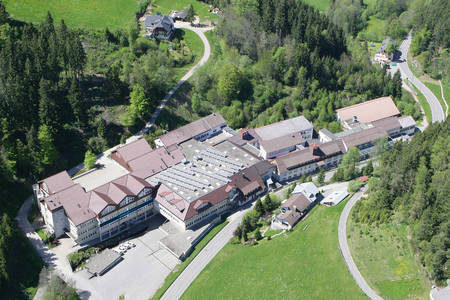
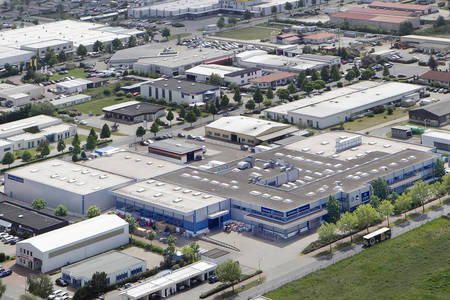
"The good Schneider refill" reaches the top of its prominence in the 1960s. Standardization as well as the development of special machines make their contribution to rational industrial production. Prices can be reduced and at the same time pens become affordable for everyone because of increasing prosperity. Christian Schneider, however, realizes early on that the future of the company cannot be assured solely with the production of refills.
Plastics engineering finds its way into the industry and in 1957 Schneider begins the production of complete writing instruments in addition to the traditional processing of metal. Stick pens and attractive desk displays for ball point pens broaden the product range.
In 1960 Schneider and Edding establish an exclusive contract for the sale of markers after Edding joins the Schneider sales organization for Germany and West Berlin in 1951. The importance of being a supplier for retailers increases continuously. The agreement with Edding defines responsibilities. Felt and fiber markers are reserved for the Hamburg company while Schneider focuses on the ball point pen. As a mass manufacturer with a high degree of automation, Schneider becomes the leader in the field of ballpoint pens for everyday life and office. Large metal refills enter the product range. Schneider also puts an enormous amount of effort into the development of ink pens and cartridges and at first has to cope with bitter setbacks. In 1975 a new product with the internationally recognizable name "Topball" is launched. It is the beginning of a completely new product category: rollerball pens.
On 1 January 1975 Roland Schneider joins the company and together with his father leads it into the second generation. Soon after this, the company founder Christian Schneider passes away in July 1978 after a short illness. The position as sole managing director falls to Roland Schneider. His passion is writing instrument technology and his goal is the development of the company into a technology leader. To strengthen the marketing and sales section Herbert Breves joins him in 1981 on the management board. Breves has a long work history with Pelikan and therefore has considerable experience in the writing instrument sector.
The agreement approved in 1960 specified Edding as exclusive supplier for markers, fiber and felt tip pens is in 1976 expressly limited to Germany. Later individual products are removed entirely from the agreement. This gives Schneider the opportunity to develop felt and fiber pens and markers itself. New momentum in the product design section brings attractive ballpoint pens, ink pens and desk sets and displays. In 1980 a newly built plant II in Tennenbronn is inaugurated, providing much needed space for further expansion in the writing instruments segment. In 1982, the first assembly line for highlighters is established and the product name "Job" is born. Three years later Schneider begins to develop its own production of polyester tips and ink conductors - a key technology that is then little known in the world and especially in Europe. A milestone in the ballpoint pen range is set by Schneider with the new model K1 in 1987. Even after 25 years it is still one of the best-selling models. In 1988 employees and customers celebrate 50 years of Schneider. The company has again developed tremendously and in the ten years under the leadership of Roland Schneider sales have more than doubled.
In 1989 the Berlin Wall falls and the Iron Curtain separating the peoples of Western and Eastern Europe is torn down. New markets are opening and Schneider is well-positioned. With a full range of writing instruments for everyday use results can quickly be achieved and the export share of the company increases significantly.
At the Frankfurt Fair in 1991, the first contact with the “heiko” company of Wernigerode is established. “Heiko” was the most important producer of fountain pens in former East Germany and is experiencing financial difficulties. A month later, Roland Schneider visits the company in Wernigerode and is convinced that the existing technology for liquid ink pens offers new opportunities for Schneider. Within days, a development concept is established and presented to the trustee overseeing the purchase and sale of former East German enterprises. The concept wins out over several competitors and on June 2, 1991 the takeover agreement is signed. Schneider builds a completely new building for the manufacture of fountain pens in Wernigerode in 1992. Production and design of a modern range of fountain pens is progressing. The first models come on the market in 1993. The first liquid ink pens, named Xtra and Easy, are developed.
At headquarters in Tennenbronn the pace of investment remains high. In 1991, production plants for ballpoint and fountain pens move into a new building. Immediately after this one of the biggest and most difficult stages of construction begins, with rock being blown from the steep hillside to enable construction of a building for plastic molding, tool making and technical offices. From 1993 onwards Schneider dominates the lower price segment of ballpoint pens with its K15 model. The K15 gradually eliminates all of its competitors and to this day the K15 occupies first place in the GfK (Society for Consumer Research) rankings in Germany.
Environmental issues are the focus of increased attention. In 1993 Schneider launches a refill cartridge for highlighters and introduces it with the slogan "One pen - many refills." A "universal fit" for various refills is initiated. Roland Schneider has long been dealing with environmental issues, trying to minimize the negative impact on the environment as much as possible. He consequently adopts the voluntary EMAS regulation, installs an environmental management system and in 1998 publishes the first environmental statement to be verified by an independent expert. It will be almost 15 years before any other company in the industry takes this same step.
In 1997 Edding cancels the joint distribution agreement with Schneider at year-end. With a 40 percent stake Novus, the manufacturer of desktop staplers and hole punches, partners with Schneider in the formation of Schneider Novus GmbH, located in Weilheim near Munich. By 1998 Schneider has seamlessly closed the marker gap in the catalog left by the loss of the Edding product line. The new millennium begins on an optimistic note. Product ranges and production in Tennenbronn and Wernigerode are well-positioned and new impetus in export businesses is expected with the introduction of the euro.
The bankruptcy of the Lehman investment bank in April 2008 is the beginning of a new global financial crisis. Fortunately Schneider’s products and markets prove to be relatively robust and survive the difficult year of 2009 without any losses. The three following years are in fact among the most successful in recent history, with record sales and creation of many new jobs.
This positive development is based among other things on the launch of the Slider ballpoint pen in 2007 with its innovative Viscoglide technology. Slider is Schneider’s answer to the popular easy gliding gel pens, but without the disadvantages in capacity and storage capacity. The Slider concept is extremely successful internationally. By 2010 the next generation of this model is released, now in its characteristic cyan color.
In 2010 Roland Schneider opens up the management board of the family business to his son Christian, which sets the course for the third generation. In response to the company’s increasing size Frank Gross, former head of Marketing and Sales, is named Managing Director. The same year Schneider introduces a new corporate design. A completely new logo and corporate colors help to improve visibility and recognition in a competitive market. A new display concept quickly causes significant increases in sales. In the 2011 and 2012 alone, Schneider sees increases of a staggering 18 percent, making it one of the fastest growing companies in the industry.
 United Kingdom
United Kingdom  Nigeria
Nigeria  Poland
Poland  Turkey
Turkey  Deutschland
Deutschland  Österreich
Österreich  Schweiz
Schweiz  Suisse
Suisse  Italia
Italia  France
France  Argentina
Argentina  España
España  Nederland
Nederland  Belgique
Belgique 






